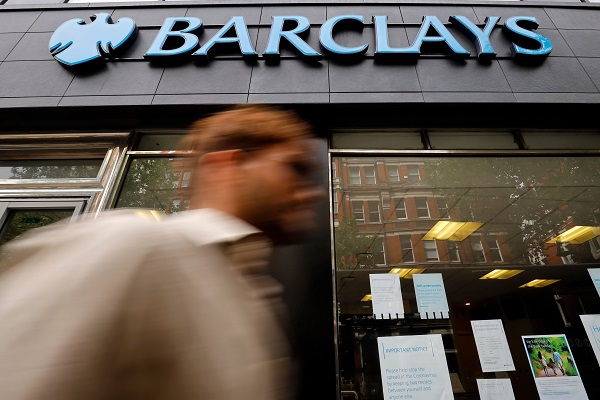Barclays fails to match Lloyds with these Q2 results
28th July 2022 09:12
by Richard Hunter from interactive investor
There have been none of the fireworks that greeted Lloyd's Bank's numbers yesterday, so why does the City still rate Barclays shares a buy? Our head of markets explains.

Over-issuance of securities in the US - a trading error to you and me - and a further impairment provision have conspired to mar the overall quarterly numbers from Barclays (LSE:BARC).
For the US situation, the estimated £1.5 billion in over-issuing securities has been reduced to a provision of £600 million due to the positive impact of hedging. Nonetheless, this hit to the investment banking operation has offset some otherwise pleasing progress.
At the same time, a further cautionary provision for bad debts has been taken in light of the potentially difficult economic times ahead, bringing the total for the half-year to £341 million, as compared to a release last year of £742 million. This £1 billion swing, coupled with the US trading impact, has inevitably debilitated profits.
- The Week Ahead: Lloyds Bank, Shell, Centrica, BT, Vodafone
- UK bank sector results season: these are the likely winners
Pre-tax profit for the six months has decreased by 24% compared to the previous year, while in the second quarter a contribution of £1.5 billion is a decline from a comparative £2.6 billion and below the expected number of £1.6 billion.
There are also some other cautionary signs, such as a cost/income ratio which now stands at 69% (driven partly by a figure of 75% in the second quarter) as compared to 65% the year previous.
In terms of consumer behaviour, the credit card business also suffered from reduced borrowing and higher customer repayments, while overall costs remain on an upward trajectory given a tightening backdrop and continued investment in the business.
Even so, the diversified business model which Barclays enjoys, unlike most of its competitors, continues to have distinct advantages. Income for the half-year has increased by 17%, underpinned by a strong showing within the International (and investment banking) business, where growth of 21% was posted, and in the CC&P business, income rose by 20% despite some more cautionary customer behaviour.
For the group as a whole, the rising interest rate backdrop has boosted Net Interest Income by 22%, which bodes well for shorter-term prospects.
The strength of the balance sheet remains intact, even though a marginal dip in the capital cushion to 13.6% (from 13.8%) has resulted partly from the US trading experience. In addition, the liquidity coverage ratio stands at an extremely comfortable 156%, and the bank’s cash generation, despite the drags, has enabled the announcement of a further share buyback programme of £500 million.
The bank has also increased the dividend, suggesting a yield of 4%, which is of some attraction to income-seeking investors.
In terms of outlook, Barclays has chosen a relatively cautious route, reiterating a target of over 10% on its Return on Tangible Equity number (although still looking for a longer-term return of between 13% and 14%), while also increasing its costs projections to £16.7 billion for the year from a previous £15 billion.
In all, the strength which business and geographical diversity gives to Barclays are still much in evidence, although the US securities error and the further debt provision have muddied the waters.
- 12 stock ideas for brave bargain hunters
- Dividend yield: three tips to help build your investment wealth
- 12 stocks for dividend investors hunting for high yields
The numbers have unsurprisingly received a lukewarm response, with the share price dip adding to a decline of 7% over the last year, as compared to a gain of 4.7% for the wider FTSE100 index.
Investors have been choosing to look through the current issues with the benefits of a longer-term view in mind and, despite a mildly disappointing update, the market consensus of the shares as a strong buy remains intact.
These articles are provided for information purposes only. Occasionally, an opinion about whether to buy or sell a specific investment may be provided by third parties. The content is not intended to be a personal recommendation to buy or sell any financial instrument or product, or to adopt any investment strategy as it is not provided based on an assessment of your investing knowledge and experience, your financial situation or your investment objectives. The value of your investments, and the income derived from them, may go down as well as up. You may not get back all the money that you invest. The investments referred to in this article may not be suitable for all investors, and if in doubt, an investor should seek advice from a qualified investment adviser.
Full performance can be found on the company or index summary page on the interactive investor website. Simply click on the company's or index name highlighted in the article.